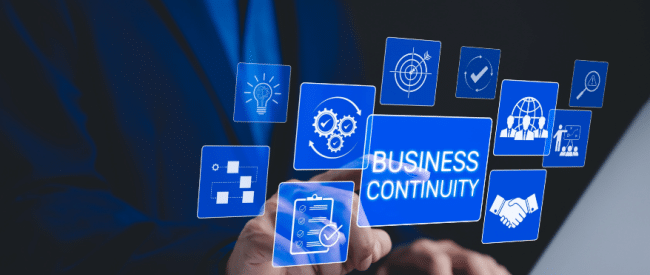As a lifelong tech guy and a corporate chief information officer, I can tell you it’s easy to get caught up in tech’s bells and whistles and to geek out on emerging technologies, from blockchain to artificial intelligence. But a tech-first approach is a big mistake when it comes to digital transformation efforts.
Digital transformation is meant to adapt businesses to thrive under changing market conditions and customer expectations. It involves implementing digital technologies to create new, or modify existing business processes, culture and customer experiences.
Technology is a lever, not the strategy. Digital transformation is how companies use their technology, processes and people to fundamentally improve their operations, products and services to drive better performance. It’s about creating a new way of doing business.
Start with your people
Your employees and culture need to be at the heart of any strategic change initiative, especially one as sweeping and fundamental as digital transformation. Otherwise, you will fail to deliver lasting change.
Culture will make or break any new technology or new way of doing business. The ability to innovate and speed of innovation depends on the enthusiasm, impatience and maturity of your organizational culture.
Match your digital strategy to your culture ‒ not the other way around!
You need to prioritize cultural alignment with the transformation strategy. Here is a 7-step process to do so, illustrated by a digital project Nordis undertook not long ago:
- Honor your existing cultural strengths.
Begin by acknowledging your strengths such as a Strong Sense of Purpose – Authenticity and Opportunities for Growth and Development, and plan your transformation to leverage those strengths.
Nordis: We undertook a digital transformation project to streamline our implementation process. Our sales process was and is strong, but we wanted to make the transition from the signed contract to go-live faster, more consistent and more efficient.
- Develop and communicate your vision, desired outcomes and purpose.
Make your vision and goals clear and simple to articulate. Tie them directly to customer and employee benefits. Explain the roadmap to getting there.
Since the pandemic, employees are motivated more than ever by purpose. Understanding a business’ purpose increases employee engagement and motivates employees to align their efforts to the greater goals.
Nordis: We’d been selling and implementing the same way for a long time and not every employee understood why we needed digital transformation. Yet, there were clear benefits for our customers and employees to overhauling the process.
We set an initial goal that all standard implementations would be complete within 12 weeks, with the ultimate goal of four weeks. We explained how our customers would more quickly realize the benefits of our Expresso® CCM solution and be able to pass those benefits on to their customers. We also shared the vision of how our employees’ role in implementation would be made easier and allow them to spend more time on complex implementations.
- Keep senior and middle management commitment highly visible and sustained.
Change starts with commitment from the top. Senior leadership needs to remain engaged and visible throughout the journey.
What’s often overlooked, though, is engaging and leveraging middle management. It’s critical to create middle management buy-in, ownership and accountability for shifting the culture and for digital transformation.
Nordis: Our senior management team was completely united in our commitment to this project. We also empowered several middle managers to contribute to and drive the project forward, from reimagining roles to implementing time-saving automation.
- Have a plan for addressing employee impacts and concerns.
New ways of working and new technologies can represent a threat to people’s jobs and careers. What are your plans to invest in retraining and upskilling programs? How are you going to transition and compensate employees who do lose their jobs?
Nordis: Our project didn’t result in any job losses, but it did create concerns over having long-held responsibilities shifted to other people or automated. By addressing these concerns head-on and with compassion, our employees found that the project held exciting opportunities for professional growth.
- Start with a few critical behavior changes.
Change is difficult, so pick your battles. Focus on a few key areas you know you can succeed in and prove you can change. Shorter sprints with realistic goals can sustain motivation as employees see the fruits of their labor.
Nordis: We mapped each stage from prospect to lead to close to implementation which previously was largely captured in Word documents, email, Excel spreadsheets, and people’s heads, and digitized the process and information at each step.
Of course, digitizing information only works if people adopt and use the new process. Our digital process has been a success: It ensures all information, including the contract and statement of work, are in one (cloud) location and easy to access. The new digital workflow not only streamlined the process internally, but streamlined client onboarding as well.
- Integrate formal and informal interventions.
Most leaders favor formal communications, rational moves and neglect the informal, more emotional side of the organization. You need both to succeed, so make sure to advocate and explain change in ad hoc conversations, at lunch and learn sessions — to discuss the roadmap, obstacles, how success is measured, or even the evolution of the process by rolling out small pilot programs to measure success and create a new culture of doing things in a more agile manner.
Nordis: Of course, we had plenty of formal meetings about this project, but we had many more impromptu conversations with employees. Not everyone wants to raise their hand in a meeting and express a concern or share an idea. These interactions allowed us to address individual concerns and surface several innovative ideas.
- Measure and monitor cultural evolution.
Establish clear metrics and targets around processes and outcomes and create accountability. From a single source of truth, collect and analyze data to track and share progress against the goals. Course-correct as needed to demonstrate tangible evidence of improvement because this will help maintain positive momentum over the long term.
Nordis: Our digital transformation project wasn’t smooth sailing the entire way, but we made tangible progress. We closely tracked all new customer accounts to measure whether our new methods were working. We acknowledged quickly what wasn’t working. Importantly, we shared the positive feedback and wins to reinforce we were on the right path. Ultimately, it was the praise from our customers and employee satisfaction that put the stamp of success on our digital transformation project.
All businesses are indeed becoming technology businesses. But the technology is only as good as those who use it. To succeed at digital transformation, you need to focus on making cultural changes that enable employees to use new processes and technologies to meet rising customer needs and expectations.
Find more insights about succeeding at digital transformation in my March 24 presentation on Simplifying Digital Transformation at ITPalooza 2021.







